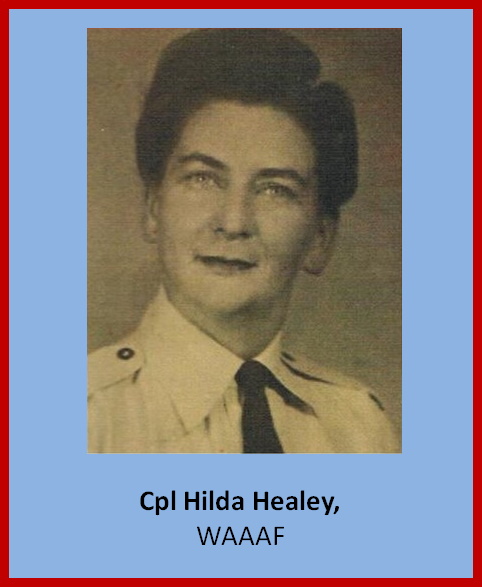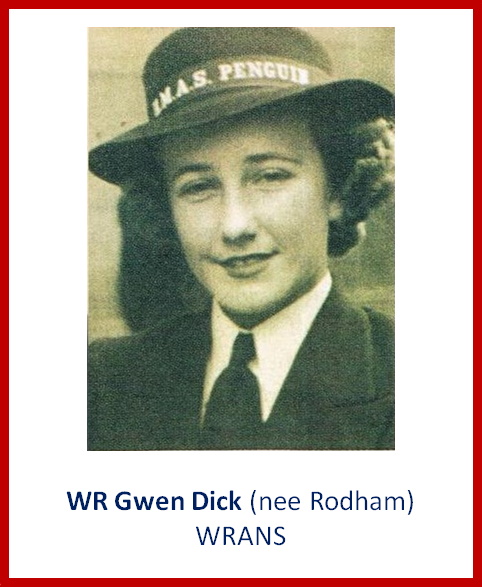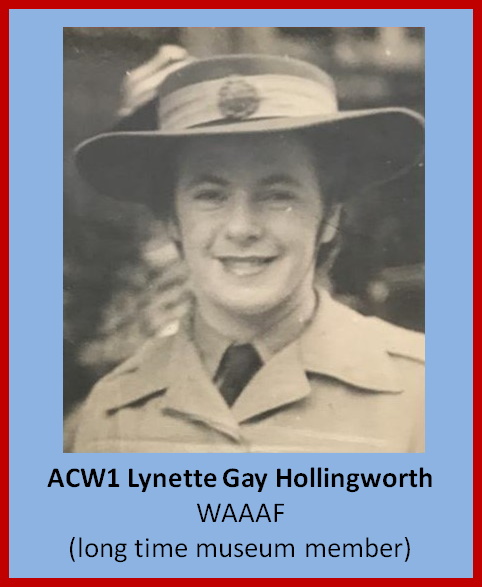Australian Women’s Army Service (AWAS) (1941 – 1947)
From: 13 August 1941 To: 30 June 1947
 Summary Summary
The Australian Women’s Army Service (AWAS) was established on 13 August 1941, to release men from certain military duties for service with fighting units. The Service recruited women between the ages of 18 and 45 and they served in a variety of roles including clerks, typists, cooks and drivers. In 1945 a contingent was sent to Lae and a small group went to Holland. In June 1947, owing to the end of World War II, the AWAS was disbanded.
Details
On 13 August 1941 the War Cabinet of the Australian Government gave approval for the Formation and Control of an Australian Army Women’s Service to release men from military duties for employment with fighting units. The name was later changed to Australian Women’s Army Service (AWAS).
From the time of the appointment of the Controller AWAS on 29 September 1941, until cessation of hostilities in August 1945, 24,026 women enlisted as volunteers in the Service.
Hitherto there had been no women accepted by the Army except those in the Medical Services and the potentialities of women in other trades and professions had not been utilised. In addition, as the Service expanded women with no particular qualifications, apart from general intelligence were used in various occupations where willingness to serve and general adaptability were the main requirements.
The first 29 officers were a representative selection of Australian women appointed after many women had been interviewed in each State. It was considered essential that those selected for the first officers appointments should have proved themselves as leaders in their own trade or profession or in some form of community service. They were expected to have qualities of enthusiasm and confidence in the contribution which women could take to the Army, balance and dependability in carrying through a task, consideration for the requirements and needs of other women, and most importantly, tact and patience necessary for pioneering a new organisation.
The first Officer’s Training School was held in Victoria in November-December 1941. During this time Japan entered the war and the need for womanpower in the Army was accentuated, recruiting and training commenced as soon as AWAS Officers returned to their areas. The types of recruits were quite splendid, alert, responsible and invariably inspired to volunteer by strong personal motives.
Initially the Army only envisaged that women would be employed as clerks, typists, cooks and motor transport drivers, and in small numbers, however, the demand grew very quickly and by the end of 1942 12,000 recruits had been enlisted and trained.
While at first AWAS were posted only to Headquarters, and Base Installations, they later took up duty, after specialist training in almost all Army Services. It is of interest to note that 3,618 served with the Royal Australian Artillery and they manned the Fixed Defences of Australia from Hobart in the South and Cairns in the North, and Perth in the West. And again 3,600 served in the Australian Corps of Signals, where they proved themselves well adapted for the type of work required of them.
Officers and other ranks of the Australian Intelligence Corps were commended for highly secret work. Motor transport drivers had truly varied lives driving cars, ambulances, trucks (up to 3 tons), jeeps, floating jeeps, Bren Gun Carriers, amphibious vehicles and driving convoys in all weathers. Australian Army Ordnance Corps employed 2,600 on a variety of tasks, some requiring a high degree of skill and all a marked degree of patience and perseverance. While quite unusual and somewhat trying work was carried out at the Proof and Experimental Range. Cooks, caterers and canteen workers were just as important as skilled Cipher clerks. There were several butchers in the AWAS.
In 1945 War Cabinet gave special approval for 500 AWAS to serve outside Australia. These members were posted to HQ 1st Aust. Army in New Guinea, 350 were selected and sailed on the MV Duntroon in May 1945.
In 1946, 1 Officer, 3 NCO’s, and 1 Private AWAS were included in the Army quota of 160 personnel in the Victory March contingent for London June 1946.
During 5 ½ years AWAS served throughout Australia from Darwin to Hobart, in populous parts and in some very lonely places. Each one according to her character and talents served Australia faithfully and well.
The Service was disbanded in June 1947.
AWAS Units 
Recruiting Depots in all areas.
71 AWAS Barracks.
Administrative Cadre for Welfare Officers.
Training Schools – LHQ Officers Schools – 25 Courses.
NCOs Schools, AWAS Recruit Training Battalions & Coys.
P & RT Schools, Supervisory Personnel School.
These training units later became Army Women’s Services school and trained AWAS and Australian Army Medical Women’s Service (AAMWS).
Recreation Centres 4 (1 Northern Territory, 3 Queensland)
AWAS first served on HQs and Base Installations and in the second half of 1942, employment was extended generally and covered Units as follows:-
HQ 1st & 2nd Aust. Army, HQ 2nd & 3rd Aust Corps.
HQ 8th Aust. Div., HQ Lae Base Sub-Area, Camp Staffs.
Artillery, Engineers, Survey, Signals, Infantry, Intelligence, Supply & Transport, Ordnance, AEME, Pay, Veterinary, Postal, Provost, Printing & Stationary, Canteens, Amenities, Education, Schools including RMC, Aust. Staff College & Training Units; Salvage.
AWAS worked as Drivers in Car Coys, and regimental establishments. Drove cars, 3 ton trucks, Jeeps, Brenguin Carriers, amphibious vehicles, ambulances and attended to the maintenance of vehicles.
They worked in watercraft workshops and in AEME repair shops: all duties connected with Signals, in the Broadcasting Unit, in Entertainment Unit, photographic unit, in Field Trail Coys. They manned A/A guns and Searchlights and they worked as hairdressers (women only), as mess and kitchen staff including several butchers and as interpreters.
Officers were appointed to staff duties as follows:
- AAG (Women’s Services),
- Director of Military Training,
- Signal Officer in Chief,
- Chaplain’s Department,
- Director of Education,
- Director Public Relations,
- Director of Amenities,
- Director of Rehabilitation,
- In Quartering,
- Military Intelligence,
- Psychology and as ADC to a GOC.
Special duties were performed by an Anthropologist, a linguist, a Veterinary Surgeon, a sculptress; also as guards for Italian female internees in hospital and assisted in courts and in one mental home during an emergency.
Several ADCs were appointed from time to time for duty with the Colonel-in-Chief of AWAS.
This office was accepted by the wife of the Governor-General and was held in turn by:
Her Excellency The Lady Gowrie
Her Excellency Lady Dugan
Her Royal Highness The Duchess of Gloucester.
AWAS in RAA numbered 3,618 in Fixed Defence
AWAS in Signals numbered 3,600
Sources:
|
























